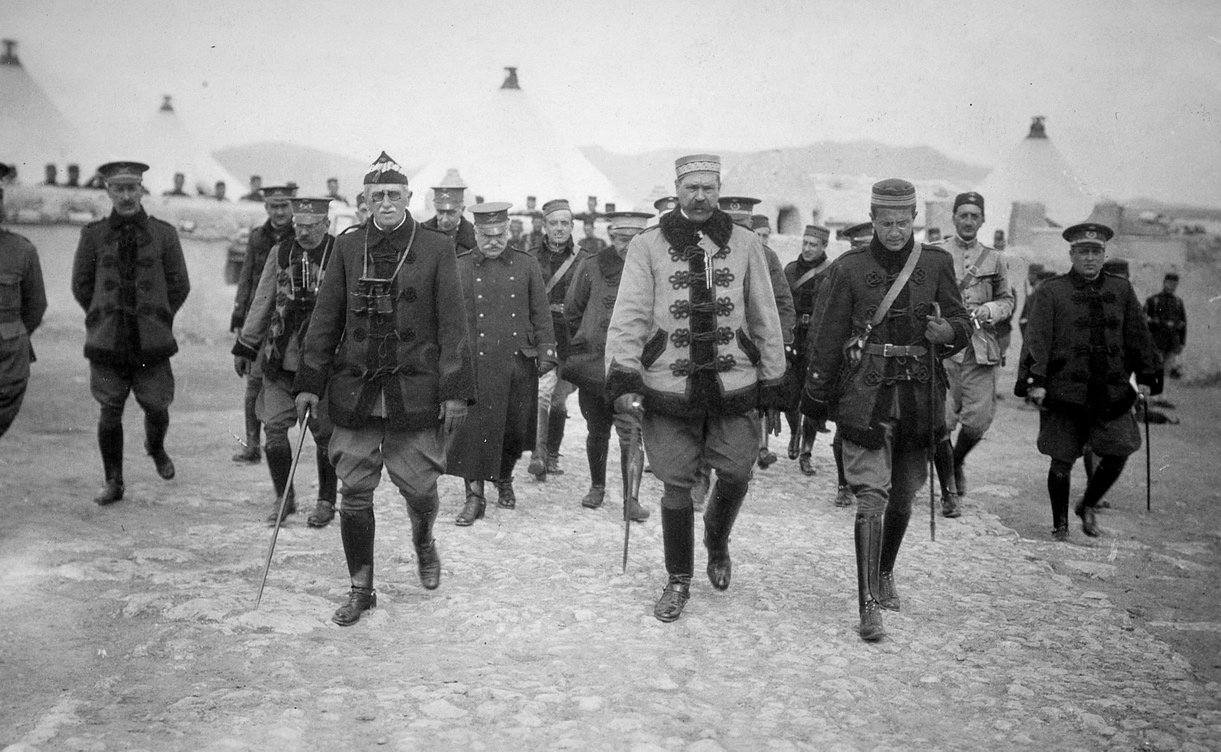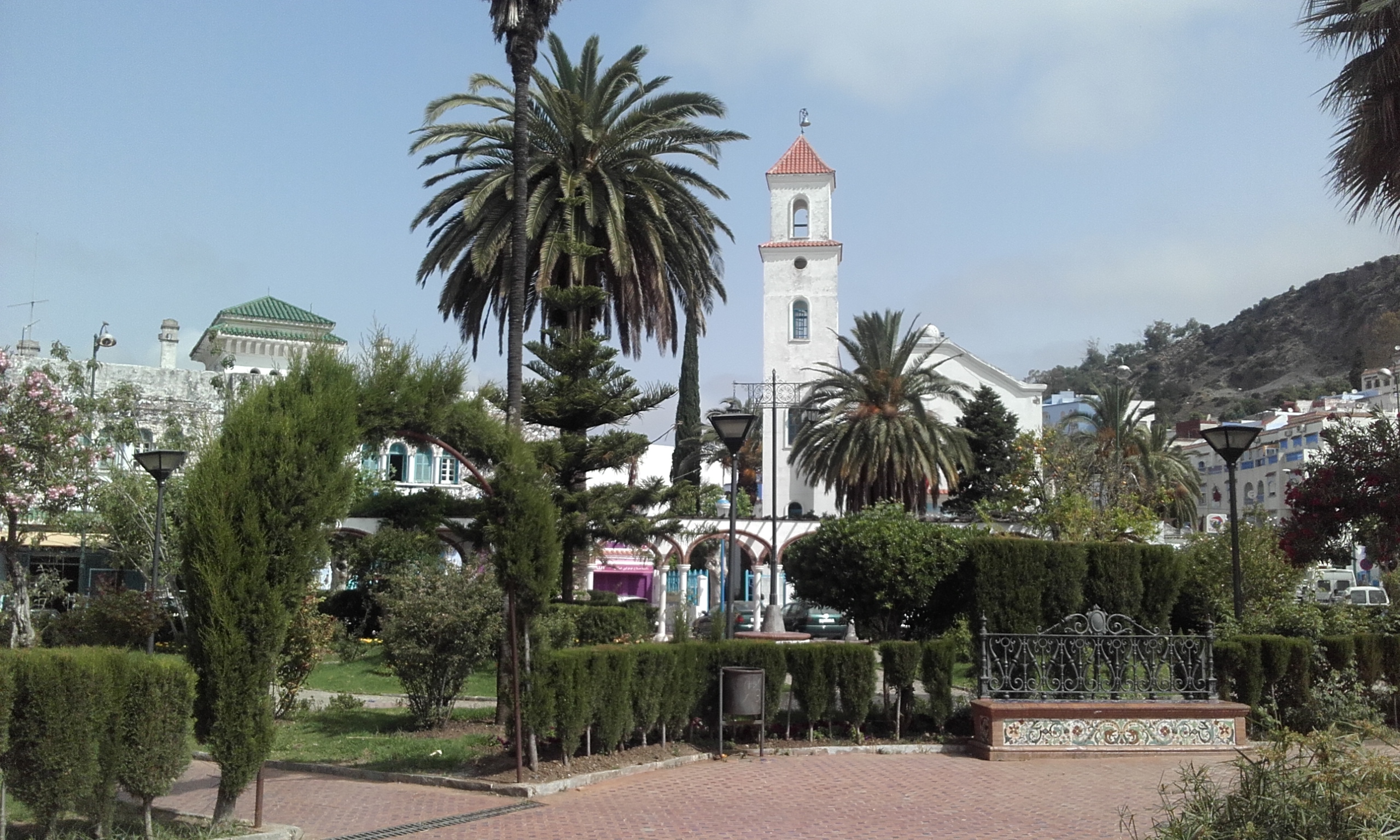|
Bombardment Of Chefchaouen
The Bombardment of Chefchaouen was an aerial bombardment of Chefchaouen, Morocco carried out in the middle of the Rif War by a rogue United States, American squadron in the service of the French colonial empire, the Escadrille Cherifienne, on September 17, 1925. Motivation The motivation to bomb Chefchaouen specifically was to drive the Jebala people out of the war, as it was a city the tribe considered Holy city, holy. Reflections Paul Ayres Rockwell later wrote: "The city looked lovely from the air, hugging its high mountain and surrounded with many gardens and green cultivations… I looked down upon the numerous sanctuaries, the six mosques, the medieval dungeon, the big square with its fountain playing and fervently hoped none of them had been damaged." References [...More Info...] [...Related Items...] OR: [Wikipedia] [Google] [Baidu] |
Rif War
The Rif War (, , ) was an armed conflict fought from 1921 to 1926 between Spain (joined by France in 1924) and the Berber tribes of the mountainous Rif region of northern Morocco. Led by Abd el-Krim, the Riffians at first inflicted several defeats on the Spanish forces by using guerrilla tactics and with the help of captured European weapons. After France's military intervention against Abd el-Krim's forces and the major landing of Spanish troops at Al Hoceima, considered the first amphibious landing in history to involve the use of tanks and aircraft, Abd el-Krim surrendered to the French and was taken into exile. In July 1909, Spanish workers constructing a rail-bridge providing access to iron mines near Melilla were attacked by Riffian tribesmen. This incident led to the summoning of reinforcements from Spain itself. A series of skirmishes over the following weeks cost the Spanish over a thousand casualties. By September, the Spanish Army had 40,000 troops in northern ... [...More Info...] [...Related Items...] OR: [Wikipedia] [Google] [Baidu] |
Chefchaouen
Chefchaouen (, ) is a city in northwest Morocco. It is the chief town of the province of the same name and is noted for its buildings in shades of blue, for which it is nicknamed the "Blue City". It is situated in a mountainous region in northern Morocco, between Tétouan and Ouazzane. It was founded in 1471 by the Moulay Ali Ben Rachid, a distant descendant of the Islamic Prophet Muhammad. The original settlement consisted of just a small fortress, now referred to as Chefchaouen’s Kasbah. The fortress was erected to help defend the area from potential attacks by Portuguese invaders; at the time, Portugal was launching attacks against northern cities and towns in Morocco. Etymology The name "Chefchaouen" is of Arabic and Berber origin coming from "Chef” (), a derivation of the Arabic word “to look”, and the Berber term “Echaouen", meaning “antlers” or “horns” and is a term used to indicate the peak of mountains. Chefchaouen thus means 'look at the horns', r ... [...More Info...] [...Related Items...] OR: [Wikipedia] [Google] [Baidu] |
Morocco
Morocco, officially the Kingdom of Morocco, is a country in the Maghreb region of North Africa. It has coastlines on the Mediterranean Sea to the north and the Atlantic Ocean to the west, and has land borders with Algeria to Algeria–Morocco border, the east, and the disputed territory of Western Sahara to Morocco–Western Sahara border, the south. Morocco also claims the Spain, Spanish Enclave and exclave, exclaves of Ceuta, Melilla and Peñón de Vélez de la Gomera, and several small Plazas de soberanía, Spanish-controlled islands off its coast. It has a population of approximately 37 million. Islam is both the official and predominant religion, while Arabic and Berber are the official languages. Additionally, French and the Moroccan dialect of Arabic are widely spoken. The culture of Morocco is a mix of Arab culture, Arab, Berbers, Berber, Culture of Africa, African and Culture of Europe, European cultures. Its capital is Rabat, while its largest city is Casablanca. Th ... [...More Info...] [...Related Items...] OR: [Wikipedia] [Google] [Baidu] |
Bulletin De L'Association Des Dames (
Bulletin or The Bulletin may refer to: Periodicals (newspapers, magazines, journals) * ''Bulletin'' (online newspaper), a Swedish online newspaper * ''The Bulletin'' (Australian periodical), an Australian magazine (1880–2008) ** Bulletin Debate, a famous dispute from 1892 to 1893 between Henry Lawson and Banjo Paterson * ''The Bulletin'' (alternative weekly), an alternative weekly published in Montgomery County, Texas, U.S. * ''The Bulletin'' (Bend), a daily newspaper in Bend, Oregon, U.S. * ''The Bulletin'' (Belgian magazine), a weekly English-language magazine published in Brussels, Belgium * ''The Bulletin'' (Philadelphia newspaper), a newspaper in Philadelphia, Pennsylvania, U.S. (2004–2009) * ''The Bulletin'' (Norwich) * ''London Bulletin'', surrealist monthly magazine (1938–1940) * ''The Morning Bulletin'', a daily newspaper published in Rockhampton, Queensland, Australia since 1861 * ''Philadelphia Bulletin'', a newspaper published in Philadelphia, U.S. (1847� ... [...More Info...] [...Related Items...] OR: [Wikipedia] [Google] [Baidu] |
United States
The United States of America (USA), also known as the United States (U.S.) or America, is a country primarily located in North America. It is a federal republic of 50 U.S. state, states and a federal capital district, Washington, D.C. The 48 contiguous states border Canada to the north and Mexico to the south, with the semi-exclave of Alaska in the northwest and the archipelago of Hawaii in the Pacific Ocean. The United States asserts sovereignty over five Territories of the United States, major island territories and United States Minor Outlying Islands, various uninhabited islands in Oceania and the Caribbean. It is a megadiverse country, with the world's List of countries and dependencies by area, third-largest land area and List of countries and dependencies by population, third-largest population, exceeding 340 million. Its three Metropolitan statistical areas by population, largest metropolitan areas are New York metropolitan area, New York, Greater Los Angeles, Los Angel ... [...More Info...] [...Related Items...] OR: [Wikipedia] [Google] [Baidu] |
French Colonial Empire
The French colonial empire () comprised the overseas Colony, colonies, protectorates, and League of Nations mandate, mandate territories that came under French rule from the 16th century onward. A distinction is generally made between the "First French colonial empire", that existed until 1814, by which time most of it had been lost or sold, and the "Second French colonial empire", which began with the French conquest of Algeria, conquest of Algiers in 1830. On the eve of World War I, France's colonial empire was List of largest empires, the second-largest in the world after the British Empire. France began to establish colonies in the French colonization of the Americas, Americas, the Caribbean, and French India, India in the 16th century but lost most of its possessions after its defeat in the Seven Years' War. The North American possessions were lost to Britain and Spain, but Louisiana (New France), Spain later returned Louisiana to France in 1800. The territory was then Loui ... [...More Info...] [...Related Items...] OR: [Wikipedia] [Google] [Baidu] |
Escadrille Cherifienne
The ''Escadrille Chérifienne'' (Cherifian Squadron) or ''Escadrille Américaine'' (American Squadron) was an American mercenary squadron fighting for the French colonial empire during the Rif War. It was attached to the Moroccan Royal Guard, or ''Garde Chérifienne''. The squadron was led by Charles Sweeny. Formation Colonel Charles Sweeny, an American pilot who had served in World War I, proposed organizing a squadron of American pilots to assist the French in Morocco, to French Prime Minister Paul Painlevé, who "warmly welcomed the Colonel’s request." Seeking "volunteers," Sweeny sent a telegram to a number of World War I veterans in the US in June 1925. By July, he had 17 volunteers, 12 of whom were pilots, including Paul Ayres Rockwell, had served France in World War I. The American volunteers were inducted into the French Foreign Legion in July, and their squadron was named ''Escadrille Cherifienne'', 19th Squadron of the Moroccan Aviation Regiment. It was legally at ... [...More Info...] [...Related Items...] OR: [Wikipedia] [Google] [Baidu] |
Jebala People
The Jebala () are a tribal confederation inhabiting an area in northwest Morocco from the town of Ketama to the west. The Jbala region thus occupies the western part of the Rif mountains. The Jbala has a population of 1,284,000 and is divided into over 40 tribes, today known as "rural communes" (), and adjacent to them are a small group of nine tribes called the Ghmara (), who inhabit the territory between the line of mountain peaks to the north of Chefchaouen and the Mediterranean Sea. In addition to tribal heterogeneity, this region is also geographically diverse. High mountains are interspersed with hills and flatlands, and local inhabitants settle in both the high mountains and valleys. In addition to the rainy climate, which influences the way the inhabitants build their houses as well as their special agricultural practices, there are also numerous cultural characteristics that contribute to an emphasised sense of identity and make the Jbala people clearly distinguishable fr ... [...More Info...] [...Related Items...] OR: [Wikipedia] [Google] [Baidu] |
Holy City
A holy city is a city important to the history or faith of a specific religion. Such cities may also contain at least one headquarters complex (often containing a religious edifice, seminary, shrine, residence of the leading cleric of the religion and/or chambers of the religious leadership's offices) which constitutes a major destination of human traffic, or pilgrimage to the city, especially for major ceremonies and observances. A holy city is a symbolic city, representing attributes beyond its natural characteristics. Marketing experts have suggested that holy cities may be the oldest brands, and more specifically, Place branding, place brands because they have value added via the perception of religious adherents. List of holy cities in the world Africa Asia Western and South Asia Central and East Asia Southeast Asia Europe North America South America See also * Ecclesiastical capital * Pilgrimage * Four Holy Cities (Judaism) References ... [...More Info...] [...Related Items...] OR: [Wikipedia] [Google] [Baidu] |
Paul Ayres Rockwell
Paul may refer to: People * Paul (given name), a given name, including a list of people * Paul (surname), a list of people * Paul the Apostle, an apostle who wrote many of the books of the New Testament * Ray Hildebrand, half of the singing duo Paul & Paula * Paul Stookey, one-third of the folk music trio Peter, Paul and Mary * Billy Paul, stage name of American soul singer Paul Williams (1934–2016) * Vinnie Paul, drummer for American Metal band Pantera * Paul Avril, pseudonym of Édouard-Henri Avril (1849–1928), French painter and commercial artist * Paul, pen name under which Walter Scott wrote ''Paul's letters to his Kinsfolk'' in 1816 * Jean Paul, pen name of Johann Paul Friedrich Richter (1763–1825), German Romantic writer Places *Paul, Cornwall, a village in the civil parish of Penzance, United Kingdom *Paul (civil parish), Cornwall, United Kingdom *Paul, Alabama, United States, an unincorporated community *Paul, Idaho, United States, a city *Paul, Nebraska, United Sta ... [...More Info...] [...Related Items...] OR: [Wikipedia] [Google] [Baidu] |
Berber History
Berbers, or the Berber peoples, also known as Amazigh or Imazighen, are a diverse grouping of distinct ethnic groups indigenous to North Africa who predate the arrival of Arabs in the Maghreb. Their main connections are identified by their usage of Berber languages, most of them mutually unintelligible, which are part of the Afroasiatic language family. They are indigenous to the Maghreb region of North Africa, where they live in scattered communities across parts of Morocco, Algeria, Libya, and to a lesser extent Tunisia, Mauritania, northern Mali and northern Niger. Smaller Berber communities are also found in Burkina Faso and Egypt's Siwa Oasis. Descended from Stone Age tribes of North Africa, accounts of the Imazighen were first mentioned in Ancient Egyptian writings. From about 2000 BC, Berber languages spread westward from the Nile Valley across the northern Sahara into the Maghreb. A series of Berber peoples such as the Mauri, Masaesyli, Massyli, Musulamii, Gaetuli ... [...More Info...] [...Related Items...] OR: [Wikipedia] [Google] [Baidu] |




